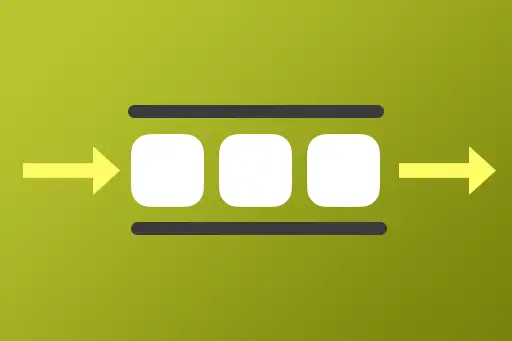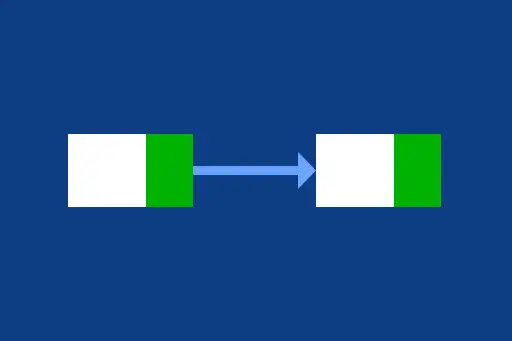- 1Singly Linked List Introduction
- 2Singly Linked List – Create Operation
- 3Singly Linked List – Insert Operation
- 4Singly Linked List – Delete Operation
- 5Singly Linked List – Traversal Operation
- 6Singly Linked List – Search Operation
- 7Singly Linked List – Get Length Operation
- 8Singly Linked List – Reverse Operation
- 9Doubly Linked List Introduction
- 10Doubly Linked List – Create Operation
- 11Doubly Linked List – Insert Operation
- 12Doubly Linked List – Delete Operation
- 13Doubly Linked List – Traversal Operation
- 14Doubly Linked List – Search Operation
- 15Doubly Linked List – Get Length Operation
- 16Doubly Linked List – Reverse Operation
Singly Linked List – Reverse Operation
Visualization Player
Reverse Operation in Singly Linked List
Reversing the singly linked list so that the last node becomes the new head and all next pointers are flipped.
Reversing a singly linked list involves reassigning the next pointer of each node to point to its previous node instead of the next one.
Since singly linked lists do not have prev pointers, we must carefully use extra pointers while traversing to track the previous and next nodes during reversal.
Visual Example
Suppose we have the following singly linked list:
We want to reverse the list so that the order becomes 50 → 40 → 30 → 20 → 10.
Step-by-Step Reversal
- Start with
prev = nullandcurrent = head (10). - Step 1:
current = 10
Savenext = 20, reverse the link (10 → null), moveprev = 10,current = 20. - Step 2:
current = 20
Savenext = 30, reverse link (20 → 10), moveprev = 20,current = 30. - Step 3:
current = 30
Savenext = 40, reverse link (30 → 20), moveprev = 30,current = 40. - Step 4:
current = 40
Savenext = 50, reverse link (40 → 30), moveprev = 40,current = 50. - Step 5:
current = 50
Savenext = null, reverse link (50 → 40), moveprev = 50,current = null.
At the end, prev points to the new head of the reversed list, and current is null. Return prev as the new head.
Complete Pseudocode: Reverse a Singly Linked List
This pseudocode shows how to reverse a singly linked list in-place by manipulating the node pointers.
function reverse(head):
prev = null
curr = head
while curr != null:
next = curr.next
curr.next = prev
prev = curr
curr = next
return prevLet’s understand each part of the code step by step.
function reverse(head):
prev = null
curr = headExplanation: We initialize prev as null because the new tail will point to null. curr starts at the head of the list.
while curr != null:
next = curr.next
curr.next = prev
prev = curr
curr = nextExplanation: We iterate through the list and reverse the direction of each link one by one. We use next to temporarily hold the next node before updating pointers.
return prevExplanation: After the loop, prev points to the new head of the reversed list, so we return it.
Singly Linked List Reverse Operation Examples
The following examples demonstrate how a singly linked list is reversed in-place by updating the next pointers of each node.
| Initial List | Reversed List | Explanation |
|---|---|---|
| [10, 20, 30, 40] | [40, 30, 20, 10] | Each node's next pointer is reversed one by one while traversing the list. Final head becomes the previous tail. |
| [5, 15, 25] | [25, 15, 5] | The links between nodes are flipped. The last node becomes the new head. |
| [1] | [1] | Single-node list remains the same after reversal. |
| [] | [] | Empty list stays empty after reversal. |
Time Complexity of Singly Linked List Reverse Operation
| Reversal Case | Time Complexity | Explanation |
|---|---|---|
| Iterative Reversal | O(n) | We traverse the entire list once, updating each node’s next pointer. Each operation takes constant time. |
| Recursive Reversal | O(n) | The recursive approach also visits each node once, though it incurs additional call stack overhead. |
Space Complexity of Singly Linked List Reverse Operation
| Reverse Case | Space Complexity | Explanation |
|---|---|---|
| Iterative Reverse | O(1) | We reverse the list in-place using a constant number of pointers (like prev, curr, next). No additional space is needed. |
| Recursive Reverse | O(n) | Each recursive call adds a new frame to the call stack, leading to linear space usage proportional to the number of nodes. |
Key Takeaways
- Reversing a singly linked list involves changing the direction of all
nextpointers. - In the iterative approach, we use three pointers:
prev,curr, andnextto reverse the list in-place. - The iterative reverse has a time complexity of O(n) and space complexity of O(1).
- A recursive reverse is elegant but uses O(n) space due to call stack frames.
- Always update the
headpointer to point to the new first node after reversal. - Reversing the list does not require any new node creation or deletion.
Next Topic ⮕Doubly Linked List Introduction






Comments
Loading comments...